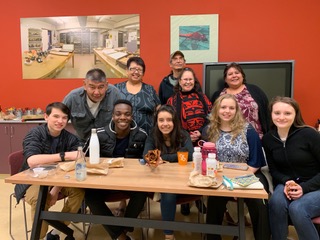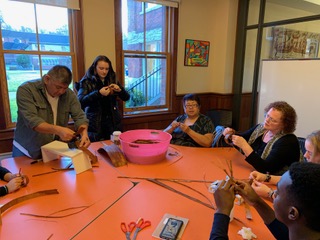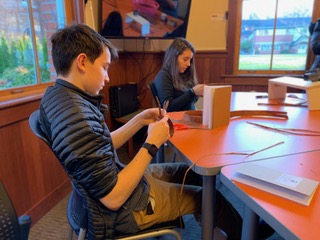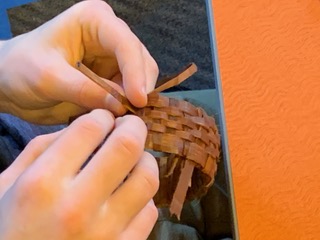Words & Photos from Daria Drys




For the third expedition day for the Who Am I? Exploring Cultural Roots cohort, we started the day off in the Glasserie on the school campus. Two members of our local First Nations community, Willie and Rose, came in and discussed the uses and vitality of cedar bark to Indigenous people. Rose explained that there are two types of cedar that can be used to make a variety of necessities; red and yellow cedar. Yellow cedar was described to have a super soft texture, which is great for making diapers for babies or general clothing, a fantastic substitute for an animal hide. The cedar bark also had a nice smell to it which was quite calming. Besides the pleasing smell, cedar was used for everything they made, from longhouses and canoes to bracelets and hats, which is why they relied on it so heavily.
Both Rose and Willie also spoke about their history with the Indigenous culture and how it has impacted them. They heavily talked about the negative impacts that residential school has had on them and their families. They described themselves as the second generation of people to experience residential schooling (unlike their parents, who attended residential schools), therefore they couldn’t be strongly connected to their ancestral roots because their parents were either scared out of their minds or forgot their culture and practices because they had the Christianity practices drilled in their heads. Rose says her mom was an excellent knitter and she wishes she could’ve learned how to knit more complex things. Willie also mentioned that if he never joined the local Indigenous tribe he would’ve never learned their culture and practices. After the deep and emotional discussion, Willie sang us a song in his native language while playing a native drum that signified he was our friend forever and we always be in his heart. Later, we all wove bracelets out of cedar that Willie and Rose provided for us. Rose also taught some of us how to make a rose out of the cedar and how to attach it to our bracelets, almost like a charm. For us to easily use the cedar, it had to be soaked in warm water so it was less rigid when we wove our bracelets. In Indigenous culture, the first piece of work you create from cedar has to be given away to symbolize you won’t do it the same again, but better with fewer mistakes. It's best to give it to a special someone in our lives to make it more significant.
In the afternoon, we took the bus to the Royal BC Museum with Willie and Rose to meet three other Indigenous people, Sandra, Sandra’s husband, and Florence. In the museum, Sandra explained most people commonly mistaken Indigenous people for sharing the same language and dialect, when in reality, there are many different dialects which depend on where you live. Both Sandra and Florence described the different dialects they spoke and that in the Indigenous language, one word could mean a whole sentence which is pretty crazy to think about if you ask me. Sandra also spoke about how many Indigenous people suffered great identity loss. Children names were manipulated by the government in residential schools. After Sandra and Florence shared their stories we set out to explore the Indigenous part of the museum, with a different perspective in mind. Looking at the displays in the museum is when you could clearly see how much Indigenous people have suffered. When we finished looking at the displays, we headed back to the room we had reserved for us in the museum. In that room, Sandra made us this beautiful, giant cedar rose which we decided to put in the admissions office as a display. Florence also mentioned that they have many workshops in the summer for creating beautiful masterpieces out of cedar and anybody is allowed to join. Finally, Willie showed us how to play an Indigenous game called Slahall. The goal of the game is to have all the sticks. It’s pretty much a guessing game where you have to guess in which hand is the solid elk antler. It was the students versus the teachers and obviously, the students won the best out of three matches. The victory and the discussion we had as a group was a nice way to end off our day. We are all so excited for more expedition days to come!